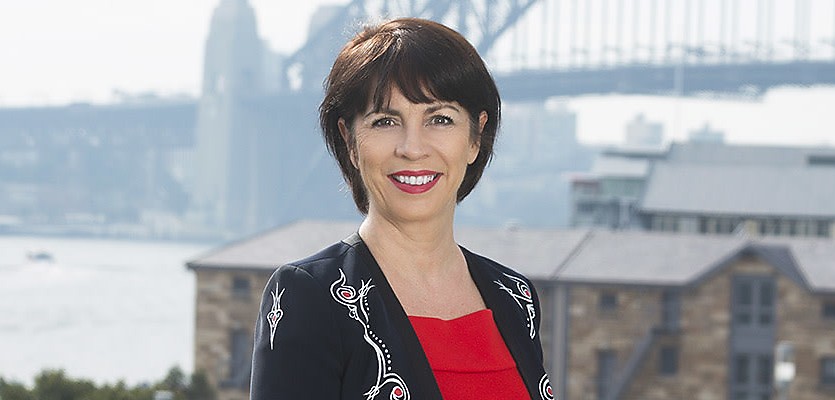The Laing+Simmons managing director and president of the Real Estate Institute of NSW (REINSW) has penned some thoughts on what agents can expect from the year ahead.
Before she looked to the future, the president, who was also crowned Industry Thought Leader of the Year at the recent REB Women in Real Estate Awards, said “all things considered, 2020 closed on a high”.
A mild increase to house prices — achieved over the second half of the year — is providing “some comfort to consumers as Australia embarks upon a long-term economic recovery”, despite the current lack of supply.
Ms Pilkington believes the ongoing supply shortage, combined with continued strong demand, “should see prices remain on course to climb steadily through 2021”.
Here are her thoughts on what agents can expect to see in the first home buyer and investor demographics, what will become of upgraders and downsizers, how rental markets could fare across 2021, and what might take place in the age-old house versus apartment debate.
- First home buyers
According to Ms Pilkington, first home buyer activity momentum should continue into the new year, despite changes on the horizon that could introduce some issues for those looking to enter the market.
“Low interest rates, the extension of HomeBuilder and stamp duty concessions for lower-priced properties will continue to fuel demand among first home buyers,” she highlighted.
And while expectations of property price increases do typically disadvantage first home buyers the most, the president said this is currently balanced by affordable finance.
If anything, it’s a shortage of supply that will create first home buyer hurdles, meaning “developers can be expected to target first home buyers as part of a broader cross-section of buyers to increase the viability of their projects”.
This is especially true where developers are trying to “catch up” after a slight downturn during the pandemic’s height.
“For new builds, product diversity is key, and this means accounting for the needs of first home buyers, many of whom are more willing to embrace apartment living as a preference,” Ms Pilkington continued.
Key takeaway: “The rebound in the second half of 2020 underlined the value people see in bricks and mortar and in terms of stability as an asset class, at the outset of a prolonged economic recovery, we expect young people to continue to view property favourably, particularly if the employment market remains resilient,” the president considered.
- Investors
The president expects investors to be out in force over the next 12 months.
While prices are increasing, “the consensus is that the growth cycle has another few years to play out”, she offered.
Ms Pilkington stated that a number of investors will be looking to identify capital growth opportunities — with the effect that they will be competing with first home buyers to do so.
She’s also expectant of investors who would traditionally avoid regional markets expanding their search terms as decentralisation due to working from home continues to gain acceptance.
The managing director said “it follows that more developers, even major ones, could increasingly seek regional sites as opposed to fringe sites on the outskirts of metropolitan Sydney”.
“Either way, investors represent a critical target market for new projects as part of a diverse cross-section of buyers developers need to tap into.”
Key takeaway: “With cheap finance, investors are in a strong position to compete in a tight market in short supply,” Ms Pilkington said.
- Upgraders and downsizers
Despite a short supply, Ms Pilkington believes “the outlook is positive for upgraders”.
“Prices are trending up but only slightly, and people will likely be able to secure a good price for their existing home to set the platform for a move,” she said.
From her perspective, “families looking to secure a larger home can have confidence in the strength of demand for their existing property, as well as a favourable interest rate environment, if they’re taking on additional finance.”
It’s regional markets that look set to benefit most, with a number of upgraders now taking a broader view of their preferred location — again, thanks to working from home.
The managing director did flag how existing property owners and mortgage holders are a section of the market often missed by government stimulus measures and incentives, despite being “the segment of the market with the most potential to level the supply-demand imbalance”.
Acknowledging stamp duty as “the prevailing barrier to downsizers making the decision to move”, Ms Pilkington conceded that, “unfortunately, the proposal to offer a choice between stamp duty and an ongoing property tax is of comparatively little positive consequence for upgraders and downsizers”.
Key takeaway: Ms Pilkington believes now is the time to reconsider the tax system as it affects property owners — which may subsequently see the overhaul of capital gains tax — “to encourage more people to move to more appropriate accommodation and create more choice for others”.
- Rental vacancy and rental prices
Vacancy rates are dropping, despite Ms Pilkington flagging that the pandemic has created a “fragmented rental market”.
As a result, 2021 will begin “with significant discrepancies in vacancies across different markets”.
The president acknowledged the differences between rental markets in lifestyle and regional areas and “true-CBD markets” — or those that rely on local student population.
While rental markets in the former are expected to see upward pressure across 2021, the latter should also expect to see a rebound where they offer access to transport and amenities as normal life post-COVID resumes.
Key takeaway: There’s still hope!
“With the first international students now back in Darwin, it is hoped they will make their way back to Sydney by the end of the first semester, meaning landlords have cause for optimism that 2020 was an aberration with the potential to be repaired in time,” Ms Pilkington said.
- Houses or apartments
While the managing director acknowledges forecasters have tipped Sydney price rises could reach 10 per cent, she did express such a prediction as “bullish”.
But it didn’t stop her from considering that the fundamentals would indicate meaningful uplift as possible in the largest city.
She’s also highlighted how recent landmark top-end sales and suburban records may have skewed recent median price figures, but they do emphasise and reinforce the value Australians do place on property.
The president has observed that new apartment supply did slow over the year for certain postcodes which have been the subject of new developments and increased density in recent times, meaning there is still scope for further absorption.
As a result, some off-the-plan sales may be subdued and prices could remain stagnant until this supply is taken up, meaning developers will need to focus on creating diverse products which appeal to broad buyer mixes instead of simply maximising the number of apartments they can squeeze into a site.
Key takeaway: “Across the board, we see dwelling prices maintaining a steady increase in 2021 in a continuation of the rebound which emerged in the second half of 2020,” Ms Pilkington said.
ABOUT THE AUTHOR

Grace Ormsby
Grace is a journalist across Momentum property and investment brands. Grace joined Momentum Media in 2018, bringing with her a Bachelor of Laws and a Bachelor of Communication (Journalism) from the University of Newcastle. She’s passionate about delivering easy to digest information and content relevant to her key audiences and stakeholders.









You are not authorised to post comments.
Comments will undergo moderation before they get published.